Check out some books by your tutor Fiona Veitch Smith … (click on the book covers to find out more)
 This is the second session of eight in our online creative writing course, in which we’ll be exploring how to write a short story. Now that your creative juices have been stirred, you should be ready to start writing; if not, go back and try some of the exercises in the first session of this course, releasing your creativity.
This is the second session of eight in our online creative writing course, in which we’ll be exploring how to write a short story. Now that your creative juices have been stirred, you should be ready to start writing; if not, go back and try some of the exercises in the first session of this course, releasing your creativity.
Writing short stories versus writing novels
Most new prose writers have the beginnings of at least one novel in their drawer. They will get to chapter three or four and give up because they don’t have the skill, confidence or stamina to carry on. If you’d never run a marathon you would be a fool to enter the Great North Run without first attempting some shorter distances. Short stories are the best place for new writers to hone their craft. But don’t be fooled, they’re not necessarily the easiest option. It takes a great deal of skill to write a short story that’s effective – you will have to curtail any tendency to ramble on. And not all writers need to be novelists either. I believe F. Scott Fitzgerald was quite comfortable as a short story writer and only produced the occasional novel out of pressure from his publisher, while the great Raymond Carver never wrote a novel in his life.
Short stories are an endangered species
There was once a time when every magazine carried some short fiction. Sadly, that time has passed. Now, apart from some weekly women’s magazines in the UK, short stories have retreated between the dusty covers of literary publications. The situation has become so bad that a group of leading writers and publishers got together to start the Save the Short Story Campaign and are beginning to make good progress.
Short stories appear to be doing far better across the pond in America where the art form is more respected and accessible to ‘ordinary’ readers. However, there are signs that this may not continue. Read Stephen King’s thoughts on the decline of the American short story. You can check out Writer’s Market for a list of North American short story outlets.
How long is a short story?
So what is a short story? Short stories can be anything from 500 to 6000 words. Anything under 500 words tends to be labelled ‘flash fiction’ or ‘micro fiction’ (although some would argue it’s still a short story) and anything over 6000 is moving into novelette or novella territory. I would argue that a short story is something that can be read comfortably in one sitting and doesn’t leave you starving or bloated. Popular magazines tend to accept work of between 1000 – 2000 words, more literary ones go for longer. Children’s short stories tend to be under a thousand words. If you would like to write for younger readers, check out some of my articles on writing for children.
A short story is a slice of life
A short story is a slice of life. As such, you should narrow the time frame and geographical location of the piece. One plot, two or three characters and no more than two locations (one would be better) should fit into a short story. If this is too tight a fit perhaps you should be writing a novella or a novel.

Fig 1: Short story time span
How to begin a short story
Start your piece as close to the turning point or climax of the story as possible. Most writers take a paragraph or so to find their feet. On a second reading they will delete the first paragraph as unnecessary exposition or padding. Your first sentence is crucial; it should be filled with energy, intrigue and forward momentum. The reader should be stopped in their tracks and not be able to turn away until they’ve read the whole thing. The first sentence should raise questions that need to be answered. Take for example these openers:

- ‘My mother was making me a dress.’ (From ‘Red Dress – 1946′, Dance of the Happy Shades)
- ‘General Sash was a hundred and four years old. ‘ (From ‘A Late Encounter With the Enemy’, The Complete Stories)
- ‘Fact is the car needs to be sold in a hurry, and Leo sends Toni out to do it.’ (From ‘Are These Actual Miles’, The Oxford Book of American Short Stories)
Exercise 4: Jot down questions that arise from these openings and what, if anything, makes you want to read on. If you can get hold of copies of the stories do so. Ask yourself: were the questions answered? Was I satisfied with the answers? Was the answer what I expected?
Exercise 5: Use a trigger image, phrase or thought (see Releasing Your Creativity) then write down a leading, opening sentence. What questions might be raised? How might you answer those questions in a short story? What setting would be most appropriate to answer the questions? How long will it take for the question to be answered? Can you think of any characters that might help you tell the story and answer the question? (We will be looking at building a character in a future session and try writing another story from their perspective). Look over your answers and see whether or not the outline of a short story is emerging. If not, try another sentence or another trigger image.
Beginning, middle, end
Every short story should have an opening that is developed in the middle to build tension which reaches its climax towards the end, after which there is a rapid conclusion. For those of you who have studied any dramatic or literary theory you will recognise this progression as typical Aristotlean Three Act Structure. In a short story you should not spend too much time in the ‘first act’ where development, setting and exposition take place, and should start your narrative as close to the inciting incident (aka point of change, first turning point or initial crisis) as possible. The inciting incident is the event which upsets the apple cart of the characters’ ordinary world and compels them to act in a certain way in order to bring balance or closure to their disrupted environment. In the Red Dress it is the school dance which the narrator fears will bring humiliation. She then tries to fake illness in order to get out of it, then, when this fails, tries to remain as invisible as possible at the dance. We will look at how a character acts to bring or avoid change change in a future discussion.
Exercise 6: What is the ‘ordinary world’ of your opening sentence? Remember, this may be an abnormal world to most readers, but it should reflect the status quo of your characters before it is challeged or shaken up. What challenges this status quo? This is your inciting incident. Using only three paragraphs (50 – 60 words each) or less, start writing your short story. In this short space you should establish your ordinary world, your main character and the inciting incident of your story.
Obstacles, setbacks, climax and resolution
This is the outline of the rest of your story. Imagine a graph of building tension.

Fig 2: Dramatic development in three act structure
Your story should follow that arc by allowing your character to face obstacles, setbacks and minor victories on the way towards reaching the dramatic climax and bringing resolution.
Exercise 7: If you are graphically minded draw yourself a rough graph or jot down the beginning, middle and end of your story. Now write the story and fill in the gaps. If you’re not so graphically minded, just jot down a few key phrases or events that might carry your story forward to a possible conclusion. Don’t worry, this isn’t cast in stone, and you can change the beginning, middle, end and anything in between at any time. Many writers just write to find their voice. That’s fine. Once you have a first draft, go back and see if it has some kind of structure or arc. If not, you may have to tweak it a little.
I hope this has given you some insight on how to write a short story. Happy writing!
The next creative writing course session is writing from a point of view.
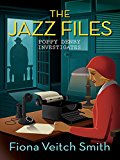
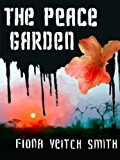
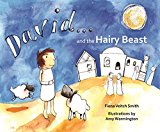
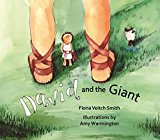
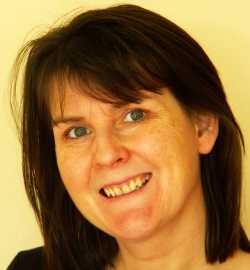 Welcome to The Crafty Writer's free online creative writing course, presented by Fiona Veitch Smith, a freelance journalist, editor, author, playwright, screenwriter and writing teacher. I hope that you'll see a dramatic improvement in the quality of your writing as you work through this course.
Welcome to The Crafty Writer's free online creative writing course, presented by Fiona Veitch Smith, a freelance journalist, editor, author, playwright, screenwriter and writing teacher. I hope that you'll see a dramatic improvement in the quality of your writing as you work through this course. 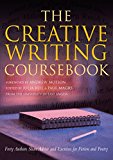
Hi
I have just started reading through your course and I am loving the exercises! One would not expect some of them to be somewhat “difficult” to express, for lack of a better word.
I am, however, simply wondering what you thought of Jane Eyre? Although I am assuming you have read it..
Thanks
I read Jane Eyre 25 years ago as part of my English Lit course at uni – so a vague memory now. It’s a novel of its time. By contemporary standards it would require a lot of editing – longwinded and overwritten in places, particularly the middle section when Jane goes to live with her brother (yawn). But you can’t impose modern views on editing on old books. It’s a great story that has stood the test of time. Great characterisation of Jane and Mr Rochester. Lovely description of him when we meet him for the first time.
Dear Fiona,
Thank you for the tips on the first sentence. I went and reviewed all my prospective drafts with these questions in mind and amended some beginnings so as to hook the reader immediately. Very common sense pointers. Thank you!
Ilona
I found the second session to be easy to follow and understand. I am going to practise a little on my short story writing now.
Strength to your pen, Susan!
It was really helpful
Thank you
This was every interesting little tibit
Excellent insight to short story writing ….i was looking for it as i want to start writing short stories for children.
I love your instructions and was wondering if you have instructions for a novella or a novel? The first draft of my story is over 3000 words and there are multiple locations as well. I am just learning how to write, so any suggestion would be helpful.
Thank you for your time and this website!
Hi Kathy, I am working on a Creative Writing Course book in which I look at novels. But it won’t be ready before next year … My main tip for a novel is know your length. Most writers just start writing, get to about 15000 words and think they’ve got a novel. A novel needs to be 80000 words +! So make sure you have enough material.
thanks it was very useful for me to a short story
How nice! I am really writing a short story. Your method helps!
my mother was making me a dress! Why was she doing this, was she not well off. Your mother is a seastress
General Sash is a 194 years old. What is he a general of?
Is his army enough to stand the sands of time, Is he willy enough to stay alive
The car needs to sold in a hurry, and Leo sends Toni out to do it. Is the car evidence of a crime, that they want to be clear of. Toni knows her way around a car. How to sell it she knows, everything and then, some,
The smoke rose from the fireplace where the pictures burned. Silver had to silence the source, so he coud not speak no more. How? she did not know.
She would have to find means with which to remove the blemish from her name. Praying, no one else woudl find out. She woudl have to see to that. But the question still loomed in her mind was enormous as the evidece had been.
Coulod she continue to pay him to be silent. Or was he after soemthong more than that.The fire was good, it provided warmth, when she felt none.
The evidence she would have to destroy what ever remained of it that was still there. The semene stained sheets, the nylon stocking her lover took with him. Drats she let him have taht, Did she not.
I just wanted to take a moment to thank you for sharing all of this information. I’m a middle aged woman who needs a career change and who has spent most of her life not day dreaming and creating because it was ‘a waste of time’. In these few lessons, I’ve learned a great deal and I’m developing the courage to let my creative side break free. This is wonderful and greatly appreciated!
Dear Heather, from one middle-aged woman to another: glad to be of service
If you read the FAQ page you will see this is not a graded course and you will not get feedback. There are plenty of paid courses that will do that for you – you will not get a free one. To get feedback a tutor must be paid for their time and expertise just like you will expect to be paid for work you do. Thousands of people have done this course and have been able to self-assess their own progress. Consider it like working through a book on creative writing. If you put in the time you will get results.
Structure is where I have problems. This was very informative. Thanks for the help!
I’VE written my first short story using the format that you suggested. I’m pleased with the outcome.I am ready for some constructive criticism.
Hi Paul, great you’ve got a story down. I will be back at work on Monday 5 Jan. Contact me again then and we can arrange your critique. The cost will depend on your word length.
Great lesson,I am an aspiring writer.I write fiction.This course is great and very through.
thank you , it helped me a lot to quickly get an idea of the task. It releases a lot of my stress.
I just began your free writing course. I was going to wait till the very end to make a comment, but I didn’t want to forget this particular comment.
I enjoyed the way you said (and strongly agree), “I would argue that a short story is something that can be read comfortably in one sitting and doesn’t leave you starving or bloated.”
Cool
Love this
Very frightened to proceed even though really enjoying the writing
Scared
judging myself
scared to fail
really loving it
Please, any idea to overcome this b Very welcome
Thank YOU